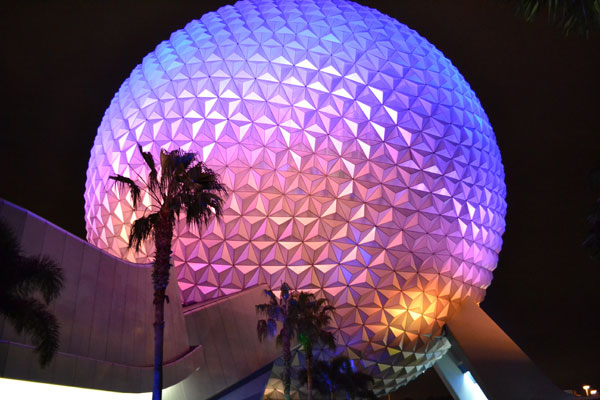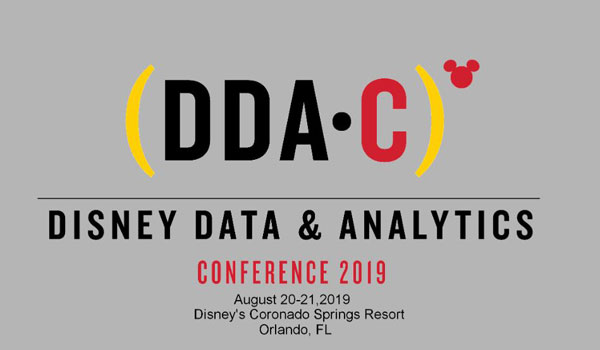
So much planning goes into Disney trips; many of us create spreadsheets to track our budgets, FastPasses, ADRs, and more for our complex vacations. That work pales in comparison to what’s happening on the other side of the aisle. A quick search of the DisneyCareers page brings up 33 job postings with titles like Analytics & Optimization Manager, Decision Science Consultant, and Revenue Management Analyst. Everything we experience during our visits to the parks is driven by these roles behind the scenes.
When I spoke to Len Testa this past March on The Tomorrow Society Podcast, he described how much analytics drives every choice Disney makes. Pricing down hamburgers to the penny and analyzing data about that price is a real job. Testa’s background at TouringPlans.com makes him a perfect resource to understand the situation. His company looks at data on crowds, lines, and more to help guests have a better vacation. That conversation inspired me to dig further into the issue and explore Disney’s use of data science.
One point of evidence is the Disney Data & Analytics Conference, an annual event at Walt Disney World. The most recent conference took place in August and included Stephen Dubner (co-author of Freakonomics), Adam Savage (Mythbusters), and other leaders of computer and data companies. It’s more of a general business conference, but the fact that Disney leads the way says plenty. The event’s description includes the “latest trends and techniques in analytical tool development, scientific approaches, and extracting value from data”. This does not sound magical, but it is reality. Data runs the show at the parks.

The Legacy of Next-Gen?
I’m not writing this article to throw darts at Disney; analytics are used everywhere, including by smart professional sports teams. Instead, I’m just trying to get a better handle on how Disney uses Big Data. My first stop is learning about the Next Generation Experience Project, which uses magical phrases like “operational efficiency” to reflect cost savings through technology. Looking back at Disney Parks Blog articles from 2013 like this one from Tom Staggs reveals so much hype. On the flip side, this 2015 article from Fast Company reveals the messy story of those efforts.
The MyMagic+ saga feels like ancient history with figures like Tom Staggs and Jay Rasulo long gone from Disney. I’ll admit that I’ve grown used to MagicBands and enjoy some conveniences, but the high costs in place of other projects at the parks still feel like a missed opportunity. It’s surprising to remember that all the changes have arrived in the last five years. We have grown accustomed to using MagicBands for doors and everything else at Disney World. Even so, the changes are hardly revolutionary.
What interests me is the analytics that aren’t obvious. We can surmise that Disney is using our FastPass Plus choices and ADRs to plan their staffing. The recent addition of seasonal tickets doubles down on the operational gains. They can also track where guests are in the parks to provide a better experience. Disney also encourages us to spend more because we aren’t pulling cash out of our pockets. Consequently, those benefits are important yet seem typical for most customer-facing businesses.

The Benefits of Big Data
The example I cited earlier about pricing a hamburger offers a glimpse at one focus area for Disney. In an interview with ComputerWeekly, Teddy Benson (Disney’s head of solution integration) cites the airlines as a model for revenue management. This idea is scary. He also cites personalization as a key to using data, and Disney excels at that approach. My family often visits Walt Disney World in January, and Disney always sends us pin codes at that time. It’s an obvious tactic yet still works.
On an episode of the Big Data Beard Podcast, Benson describes his group’s role analyzing Big Data and using it effectively. His team of more than 150 employees includes about 45 solely dedicated to data science. That fact shows dedication at Disney to the best use of data. Looking beyond personalization, Benson cites recommendations they offer guests on the parks. What confuses me is how rarely I’ve seen a successful use of those tools. The FastPasses that Disney selects up front are rarely the right choices for me, so I’m still working manually.
I’m more interested in the internal decisions that Disney makes based on the data they receive. On the podcast interview, Benson speaks of using a trial-and-error approach to guest data and digging well beyond the obvious info. It’s not just about hotel occupancy, weather, and crowd patterns. Disney wants to build evidence for what guests will choose in terms of attractions, dining, and more. The question that lingers is how much influence Disney really has on guest behavior. Can a well-timed bonus FastPass or recommended dining spot inspire a significant change?

The Ultimate Goals
From a public relations perspective, Disney uses Big Data to create a magical experience. Guest satisfaction is one part of the equation, but the reality is hardly that simple. The financial and operations benefits don’t always coincide with improvements to the customer experience. The ComputerWeekly article cites Disney’s use of machine learning during the past seven years. Complexity behind the scenes goes beyond what I can understand, and the scope keeps expanding.
Benson’s statements on the Big Data Beard Podcast aren’t easy to decipher; I still don’t understand much of what’s happening behind the curtain. A trip to the Disney Data & Analytics Conference would help, though I don’t have thousands of dollars sitting around to make that happen. I’m surprised by the limited number of recent news articles about this topic. Walt Disney World’s massive size offers countless opportunities for uses of consumer data. It’s a little frightening if you think too much about it, but it’s also an intriguing subject. I will be closely tracking this topic during the next year as Disney continues to expand its scope at Walt Disney World and beyond.



Leave a Reply